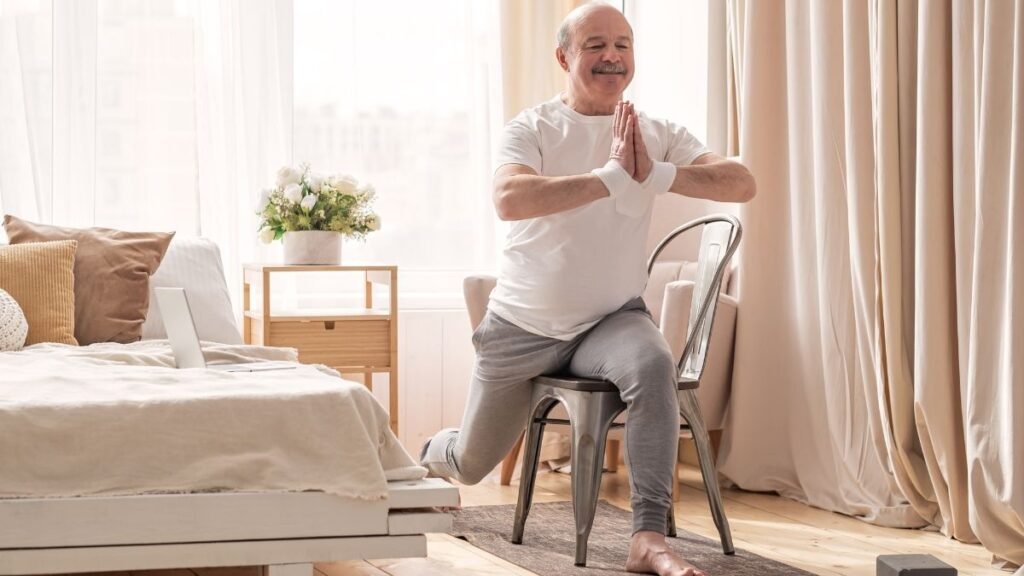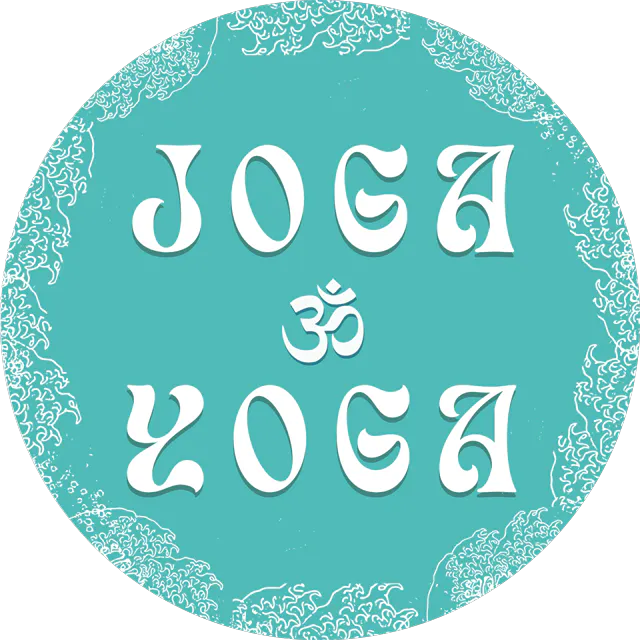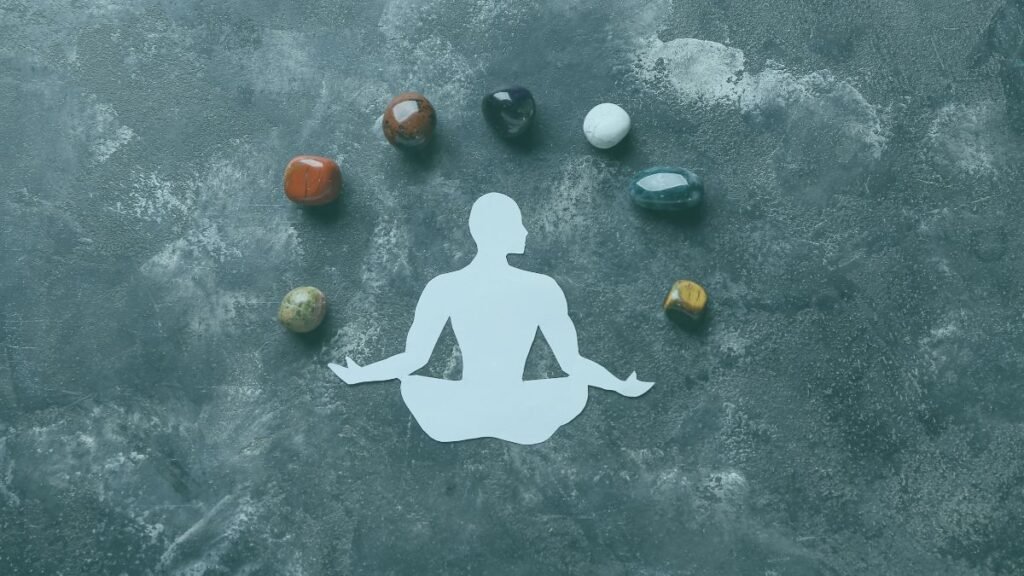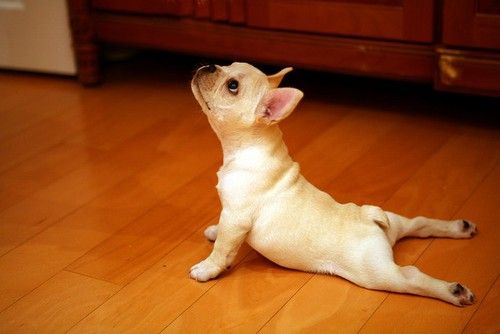Yoga isn’t just about handstands and backbends. For many people, especially older adults, those recovering from injury, or individuals with limited mobility, the key to consistent wellness is simplicity. That’s where chair yoga shines. By blending the physical, mental, and spiritual benefits of traditional yoga with the stability of a chair, this practice opens up a world of healing and strength for everyone.
Whether you’re easing back into movement or looking for a way to de-stress during your workday, chair yoga offers a safe, supportive path to improved health, posture, and peace of mind.

What Is Chair Yoga?
Chair yoga is a gentle, accessible adaptation of traditional yoga, practiced either entirely while seated or with the use of a chair for balance during standing poses. It brings the full spectrum of yoga—movement, breath, and mindfulness—to those who may not be able to comfortably practice on the floor.
Origin
Initially designed to make yoga available to seniors and people with mobility restrictions, chair yoga has evolved into a valuable tool for rehabilitation, office wellness, and stress reduction. Its origins align with yoga’s inclusive spirit: making the practice work for the body you have today.
It shares philosophical roots with Hatha yoga, which emphasizes balance, breath, and intentional movement over intensity or speed.
Key Features
Chair yoga still includes:
- Breath awareness and control (pranayama), similar to nadi shodhana
- Gentle asana (poses) adapted for seated support
- Mindfulness and body scanning
- Functional strength and balance work
It’s especially powerful for those looking to stay active without strain, or re-engage with movement after time away from exercise. As one of the best yoga practices for beginners, chair yoga requires no prior experience—just an open mind and a sturdy chair.
Who Can Benefit from Chair Yoga?
Older Adults
Aging comes with challenges to balance, joint health, and flexibility. Chair yoga offers a fall-prevention-friendly environment that enhances range of motion, strengthens stabilizing muscles, and supports healthy aging. It’s an excellent supplement to other practices like yoga for posture and back pain.
Individuals with Limited Mobility
For people healing from surgery, managing chronic conditions (like arthritis or MS), or using wheelchairs, chair yoga delivers real physical benefits without overwhelming the body. It’s a safe re-entry point into movement, similar to how somatic exercise for weight loss supports gradual re-engagement with the body.
Office Workers
If you spend hours seated at a desk, chair yoga helps counteract postural fatigue, loosen up tight hips and shoulders, and reduce work-related stress. Just a few stretches and breath-focused movements can transform your midday slump into clarity and calm, complementing other workplace-friendly tools like breathing exercises to activate the vagus nerve.
Beginners
Chair yoga is a perfect gateway into yoga. It removes the intimidation factor of mats and advanced poses while still teaching alignment, breathwork, and presence. It’s also ideal for those who find more intense formats like hot yoga too strenuous or overstimulating.
Benefits of Chair Yoga
Physical Health
Chair yoga improves:
- Muscle tone and endurance
- Joint mobility
- Postural alignment
- Balance and proprioception
Even seated poses engage the core and stabilize the lower body, helping practitioners feel more confident in everyday movement. Over time, these benefits support healthier movement patterns, as emphasized in yoga for stress relief.
Mental Well-Being
Like all yoga, chair yoga fosters emotional resilience and nervous system regulation. Focused breathwork and gentle movement can reduce anxiety, promote relaxation, and create a mindful break in your day—a benefit echoed in practices featured in transformative yoga for mental health.
Accessibility
Chair yoga requires only a chair and a few feet of space. There’s no need for yoga mats, props, or extensive mobility. It meets people where they are—literally and metaphorically.
Consistency
Because it’s easy to do at home, in the office, or in group classes, chair yoga encourages regular practice. It fits into daily life without stress, making it one of the most sustainable wellness habits, especially for those seeking realistic lifestyle shifts as seen in gentle yoga for overthinking.
Common Chair Yoga Poses
While chair yoga keeps you grounded, it doesn’t limit your movement. These foundational poses offer a full-body experience, from posture improvement to flexibility gains:
Seated Mountain Pose
This simple but powerful posture promotes postural awareness and core engagement. Sitting tall with feet grounded and spine aligned helps reinforce neutral alignment and prepare for breathwork or meditation.
Seated Twist
Twisting gently from the torso while keeping the lower body stable helps improve spinal flexibility and digestion. It’s especially beneficial for those who spend long hours sitting, and pairs well with breathing techniques explored in pranayama practices.
Seated Forward Bend
This posture stretches the hamstrings, lower back, and calves. It encourages gentle lengthening and introspection, especially when paired with affirmations or slow exhalations to release tension.
Seated Cat-Cow Stretch
Flowing between spinal extension and flexion from a seated position improves spinal mobility and activates deep core stabilizers. It’s often part of warm-ups in both mat-based and vagus nerve-focused yoga flows.
Seated Warrior Pose
Using a chair for balance while extending one leg back into a modified Warrior II builds lower-body strength and joint stability. This is an excellent pose to practice if you’re exploring the fundamentals of standing asana transitions in accessible formats.
Integrating Chair Yoga into Daily Life
Chair yoga isn’t confined to a studio—it’s a portable, lifestyle-friendly practice that fits into the smallest time blocks and physical spaces.
At Work
Desk-bound professionals can benefit immensely from chair yoga. Try simple neck rolls, spinal twists, or seated side stretches during short breaks. These movements help alleviate tech neck and boost mental focus, supporting workday wellness without disrupting flow.
At Home
Chair yoga can be done while watching TV, reading, or winding down before bed. Over time, it becomes as habitual as brushing your teeth, especially when combined with practices that promote nervous system downregulation, such as evening yoga routines.
In Groups
Hosting chair yoga sessions with friends or local community centers builds connection, accountability, and motivation. These group settings are ideal for older adults or anyone seeking social support alongside physical activity.
Chair Yoga and Emotional Well-being
Beyond physical gains, chair yoga offers deep emotional nourishment, especially when practiced with breath awareness and self-compassion.
Mindfulness Practice
Slowing down enough to sync movement with breath promotes present-moment awareness. This mindful attention can help reduce reactivity and calm internal chatter, principles echoed in yogic philosophy and found in asana and meditation integration.
Mood Enhancement
Even a 10-minute session can improve mood. Regular practice supports emotional regulation, lessens anxiety, and helps build psychological resilience, much like what’s experienced in restorative and trauma-informed yoga modalities.
Self-Efficacy
Chair yoga builds confidence by offering a realistic, accessible way to move, especially for those who have been told they “can’t” do yoga. This empowerment becomes a foundation for trying new things, on and off the mat.

Transitioning from Chair Yoga to Traditional Yoga
While chair yoga is a deeply fulfilling practice on its own, it can also act as a stepping stone into traditional yoga, especially for those gaining confidence, strength, and curiosity along the way.
Building Confidence
One of chair yoga’s greatest benefits is that it removes the intimidation factor. As balance improves, muscles strengthen, and breathwork becomes familiar, many practitioners begin to feel more prepared for mat-based classes. This gradual transition nurtures self-trust and encourages exploration without fear of injury or inadequacy.
It’s a natural bridge to more advanced techniques like somatic awareness, floor-based poses, or even flows designed for nervous system regulation.
Exploring Further
For those inspired to deepen their personal practice—or even begin teaching—chair yoga can be the starting point of a broader yogic journey. Our 200-hour Joga Yoga Teacher Training in Bali is a comprehensive program that includes multi-style training, mind-body philosophy, and an inclusive, supportive learning environment.
Whether your goal is personal growth or professional development, chair yoga lays a strong, compassionate foundation for next-level practice.
Embracing Chair Yoga at Any Age
Lifelong Practice
One of the most beautiful aspects of chair yoga is its adaptability over time. It grows with you, supporting joint health, breath awareness, and emotional balance well into your later years. As your needs change, so can your practice, making it a tool for sustained wellness and movement longevity.
This makes it an ideal complement to other age-sensitive practices like yoga for healthy aging.
Inclusivity
Chair yoga embodies the true essence of yoga: union, accessibility, and presence. It welcomes all bodies, all abilities, and all backgrounds. Whether you’re 25 or 85, flexible or recovering, this practice invites you to show up as you are—and benefit anyway.
Next Steps
If you’re just beginning, start with a few gentle poses and gradually build up as your confidence and awareness improve. As you progress, you might explore deeper aspects of yoga through guided training and foundational study.
The key is simply to begin—and to keep showing up, breath by breath.







